Black and white photographs, Alborada and the 43 Group – these come to mind when one mentions the name Lionel Wendt. But how much do we know about his years at the Ceylon Observer?
 Preserved deep within the archives for more than seven decades, Lionel Wendt’s creative years at Lake House are being re-discovered.
Preserved deep within the archives for more than seven decades, Lionel Wendt’s creative years at Lake House are being re-discovered.
From 1938 to 1941, Wendt and his fellows completely revamped the Ceylon Observer – a heavily text-based annual digest filled with ads.
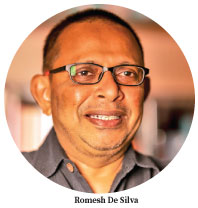 To understand more about the Ceylon Observer Pictorials, I consulted Romesh De Silva – President of the Photographic Society of Sri Lanka (PPSL) and a keen student of Lionel Wendt photography.
To understand more about the Ceylon Observer Pictorials, I consulted Romesh De Silva – President of the Photographic Society of Sri Lanka (PPSL) and a keen student of Lionel Wendt photography.
The PSSL was first set up as the Amateur Photographic Association of Ceylon in 1906 with the help of Henry Lorenz Wendt, Lionel Wendt’s father. In 1924, the young Wendt came back to Ceylon after spending a couple of years in England; a barrister by profession and a virtuoso pianist.
Revived
“He really blossomed in the craft and revived the photographic society which had been dormant in the 1920s. From that point he regularly submitted photographs to exhibitions and competitions worldwide. We need to understand that photography was not as convenient as in modern times; it was quite a cumbersome pastime then”, he said. In 1938, a commercial photography studio was set up in the Lake House building called Chitrafoto and Wendt started working for D.R. Wijewardene. The iconic portrait of the Lake House founder was taken by Lionel Wendt himself. A Bank of Ceylon branch now occupies the earlier Chitrafoto studio.
By 1939, war had broken out in Europe and the whole world was soon to be embroiled in bloody conflict.
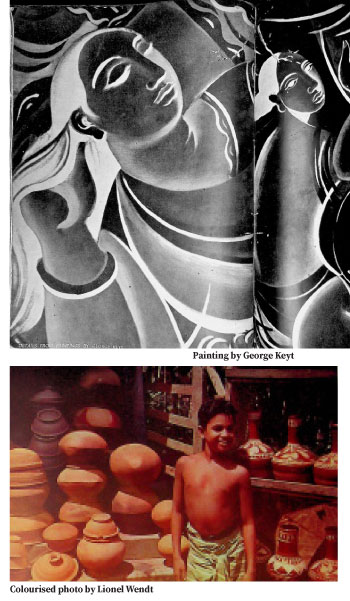 “Ceylon was far away from the conflict and insulated; so things didn’t change here. But it’s agreed that some of the work he did at Lake House happened during the war years,” he said.
“Ceylon was far away from the conflict and insulated; so things didn’t change here. But it’s agreed that some of the work he did at Lake House happened during the war years,” he said.
Calendar
Wendt also produced a calendar for Lake House at Chitrafoto but his best work was manifested in the Ceylon Observer pictorial.
Famous artists of the likes of George Keyt and Aubrey Colette also contributed to this publication. Romesh said that their collaboration could have been a factor for the eventual formation of the 43 Group.
What’s also special about the Ceylon Observer Pictorial are the rare coloured photographs taken by Lionel Wendt.
As far as photography goes, Wendt was a keen student in experimentation, Romesh said, “He was updated on all counts. There were people who experimented with different types of printing and photography during that time. An American photographer known as Man Ray used a technique called solarisation and Wendt also did some of his own.
Wendt was influenced by modernist art and surrealistic ideas and wanted his photographs to transcend straight forward documentation.
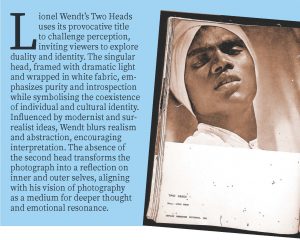 With his photography, Lionel Wendt is credited with documenting Ceylon in all its splendour and evoking ‘Ceylonism’. The Ceylon Observer and its creative team didn’t fail to provide snapshots of Sri Lankan life under British rule; you are greeted by smiling natives’ right from the cover itself.
With his photography, Lionel Wendt is credited with documenting Ceylon in all its splendour and evoking ‘Ceylonism’. The Ceylon Observer and its creative team didn’t fail to provide snapshots of Sri Lankan life under British rule; you are greeted by smiling natives’ right from the cover itself.
Although Wendt and the The Ceylon Observer’s contributors were from Colombo’s elite, the country they saw was a very native one. The pictorial never reveal the street scenes and the hustle and bustle of the city.
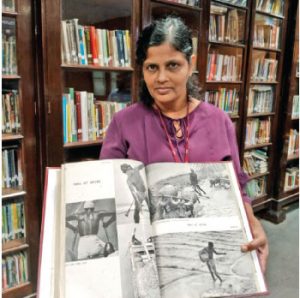
Senior Assistant Librarian with the 1939 issue
Romesh explained how Wendt’s work is different from colonial depictions of Sri Lanka. “If you look at the photographs of Ceylon taken by Julia Margret Cameron, you can see how she depicted the natives in a sort of ‘tribal’ or ‘rural’ way.
However, Lionel Wendt’s work really captured the sense of society, the real native and his sceneries are devoid of any symbols or anything related to colonial influence in Sri Lanka. Although he was born into a Western-oriented family and educated in the West, he wriggled his soul back into the soil of this island and saw its true beauty.
What is notable is the longevity of the Ceylon Observer in the Lake House archives. The Associated Newspapers of Ceylon Limited (ANCL) is renowned for its library and collection of public records that date back to the 1830s.
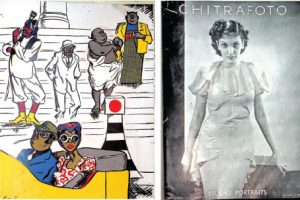
Cartoon by Aubrey Collette/Advertisment for Chitrafoto studios
Lionel Wendt’s years at the Ceylon Observer reveal a transformative era where journalism, art and cultural identity converged.
His innovative photography and collaborations with leading artists not only redefined the publication but also captured the essence of Ceylonese life with authenticity and modernity. Preserved in the Lake House archives, this chapter of Wendt’s legacy stands as testament to his deep connection with the island and its heritage, transcending both colonial influences and artistic boundaries.






